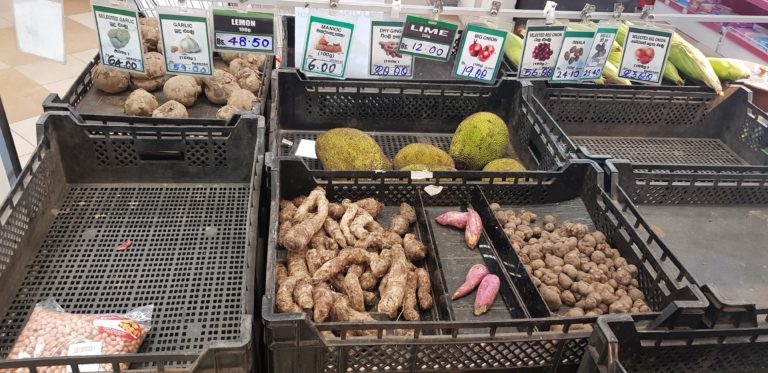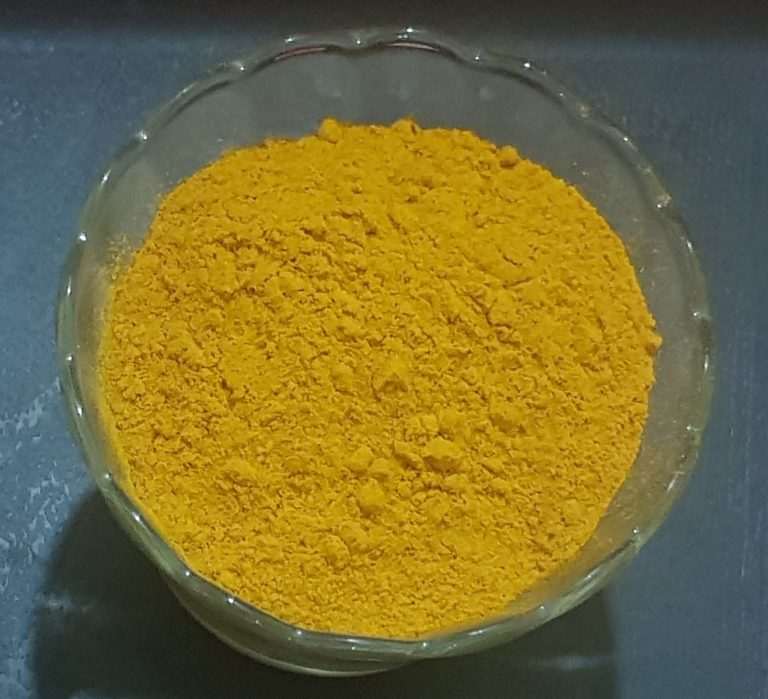- With Sri Lanka under lockdown to mitigate the spread of COVID-19, panic buying has resulted in an artificial shortage of several herbs, popular as home remedies.
- Supermarkets and smaller retailers have run out of ginger, coriander, turmeric, yellow vine and lime, and Ayurveda practitioners warn there may not be enough supplies to produce the wide range of indigenous medicinal products that many Sri Lankans trust over Western medicine.
- Authorities say the current scarcity caused by panic buying will eventually result in overexploitation and overpricing of common herbs.
COLOMBO — Sri Lanka imposed a lockdown in response to the COVID-19 pandemic on March 16, but residents of this Indian Ocean island had been panic buying various foods and supplies long before then. Among the most sought-after items: several popular herbs known to boost the immune system.
Days before the announcement of the preventive nationwide lockdown, there was a surge in bulk buying of popular herbs such as ginger, lime, turmeric, and coriander seeds, driving prices up and causing scarcity in many areas. More than a month into the lockdown, demand for those same herbs remains strong, and supplies are short.
In the capital, Colombo, goods distributor Afsan Ahamed told Mongabay that, “It’s as if people wanted extra doses of herbs to keep COVID-19 away from their homes.”
Namel Thanaraja, a homemaker who has long used many of these same herbs for cooking, described people waiting for hours and fighting, in clear violation of social distancing guidelines, to get ginger and lime in a leading supermarket chain. “Turmeric was nowhere visible. All those shelves were wiped clean,” she said. “From the regular spices, turmeric was the first to go missing. I haven’t been able to buy ginger from any delivery services in one month.”
Another shopper, Nishanthi Sandamai, said that she used to drink a concoction of boiled coriander twice a week, but that since the first COVID-19 cases were reported in the country, she’s been drinking it daily. Her latest trip to the supermarket failed to turn up any coriander.

Overwhelming demand
Big retail stores and smaller boutiques remain overwhelmed by the demand not just for basic groceries but also for these herbs. “All this panic buying has caused a severe shortage. We are trying to source these items from suppliers but they can’t match the market demand, both of individuals and producers of native medicine like Ayurveda practitioners,” said Sugantha de Silva, a grocery store owner in the Mt. Lavinia suburb of Colombo.
Among the popular herbs that swiftly went missing or now fetch exorbitant prices are ginger (Zingiber officinale), coriander seeds (Coriandrum sativum), veniwel or yellow vine (Coscinium fenestratum), and onions (Allium cepa), all known for their immunity-boosting medicinal properties. Lime (Citrus aurantiifolia) and turmeric (Curcuma longa) are also popular, both in cooking as well as for their antiseptic properties.
Traditional Ayurveda practitioners recommend the consumption of herbal drinks using coriander and veniwel to boost the immune system, a practice that has been strongly advocated amid the COVID-19 pandemic.
Sri Lanka is home to 3,771 species of flowering plants, of which 1,430, or nearly two-fifths, have medicinal properties, according to a 2019 study. A quarter of the flowering plants are found nowhere else on Earth, and this combination of rich biodiversity and high endemism has contributed significantly to the thriving and well-established tradition of native medicine.
Pushpa Gunaratne, an Ayurveda physician for nearly five decades, says this particular tradition uses hundreds of medicinal plant extracts to strengthen the immune system. These include commonly used herbs such as turmeric and yellow vine, to lesser known plants.
a host of other plants are used in Ayurveda to treat common illnesses. These include adhatoda or Malabar nut (Justicia adhatoda), Indian lilac or neem (Azadirachta indica), white or Indian sandalwood (Santalum album), red sandalwood (Pterocarpus santalinus), black pepper (Piper nigrum), bin kohomba (Munronia pinnata), katuwel batu or wild eggplant (Solanum virginianum), suvanda kapuru (Gaultheria leschenaultii), heen araththa or snap ginger (Alpinia calcarata), nelli or Indian gooseberry (Phyllanthus emblica), and rasakinda or heart-leaved moonseed (Tinospora cordifolia).

Traditional vs. Western medicine
Sri Lanka has at least four established traditional treatment systems: Ayurveda, Unani, Siddha, and Deshiya Chikitsa, or indigenous treatment — all popular methods of treating people.
Besides the use of medicinal plant resources in Ayurveda, herbs are extensively used in Sri Lankan homes to build up immunity, fight contagious diseases, and in cooking. Herbal drugs play a key role on native preventive care, with many Sri Lankans relying on traditional remedies over Western medicine. Fear of the side effects associated with the latter is one of the factors that drive people to prefer native treatments as the safer option.
Gunaratne, who runs a private practice on the outskirts of Colombo, said many concoctions, pastes, medicinal oils and powders depended on various of these plants as the key ingredients, but that they had now become scarce.
“Though commonly available medicinal herbs, we have never had a shortage before,” said Chandrarathna Edirisinghe, owner of a small native medicine store known locally as a beheth kade. “Turmeric is already scarce because it’s popular both as a spice and an antiseptic. Many other popular herbs are also scarce now, and due to the lockdown, there are problems in sourcing as well.”
While the curfew has kept his business shut, Edirisinghe said he hopes to reopen soon, but worries about sourcing herbs. “People believe in preventive native treatment. Now we are out of stock,” he said.
Overpriced and in short supply
The current scarcity is artificially driven, but practitioners of traditional medicine say they fear the current trend may cause overextraction and exploitation of medicinal plants.
“Requirements vary depending on the concoction. Sourcing the right ingredients in correct quantities is extremely important to ensure product quality,” Gunaratne said.
There have been occasional scarcities of certain plants in the past, she said, such as when they become trendy. These include monarakudumbiya or little ironweed (Vernonia cinerea), vara (Calotropis procera), and kothala himbutu (Salacia reticulata), which is widely used as a treatment for diabetes.
Overextraction can make the commonest herbs a rarity. The Department of Ayurveda, a government agency, warns that, over the long-term, the overexploitation of locally sourced herbs can have an impact.
According to K.D.C.S. Kumarathunge, the department’s commissioner, locals clearing traditional herbs to meet the surge in demand would result in a decline in the availability of the herbs.
“The artificial scarcity will turn into a real, long-term scarcity with several locally-sourced herbs being in short supply. India has relaxed its decision to suspend exports and we have begun processing papers to secure key items from India such as yellow vine,” Kumarathunge told Mongabay.
Meanwhile, to meet the rising demand, with many herbs being harvested directly from forests, plundering of forest resources may also increase, Gunaratne said.
Banner image of a selection of herbs traditionally used in Sri Lankan homes, known to have medicinal properties, to help boost immunity, and sometimes even antiseptic properties. Image courtesy of the Sri Lanka Ayurvedic Drugs Corporation.
